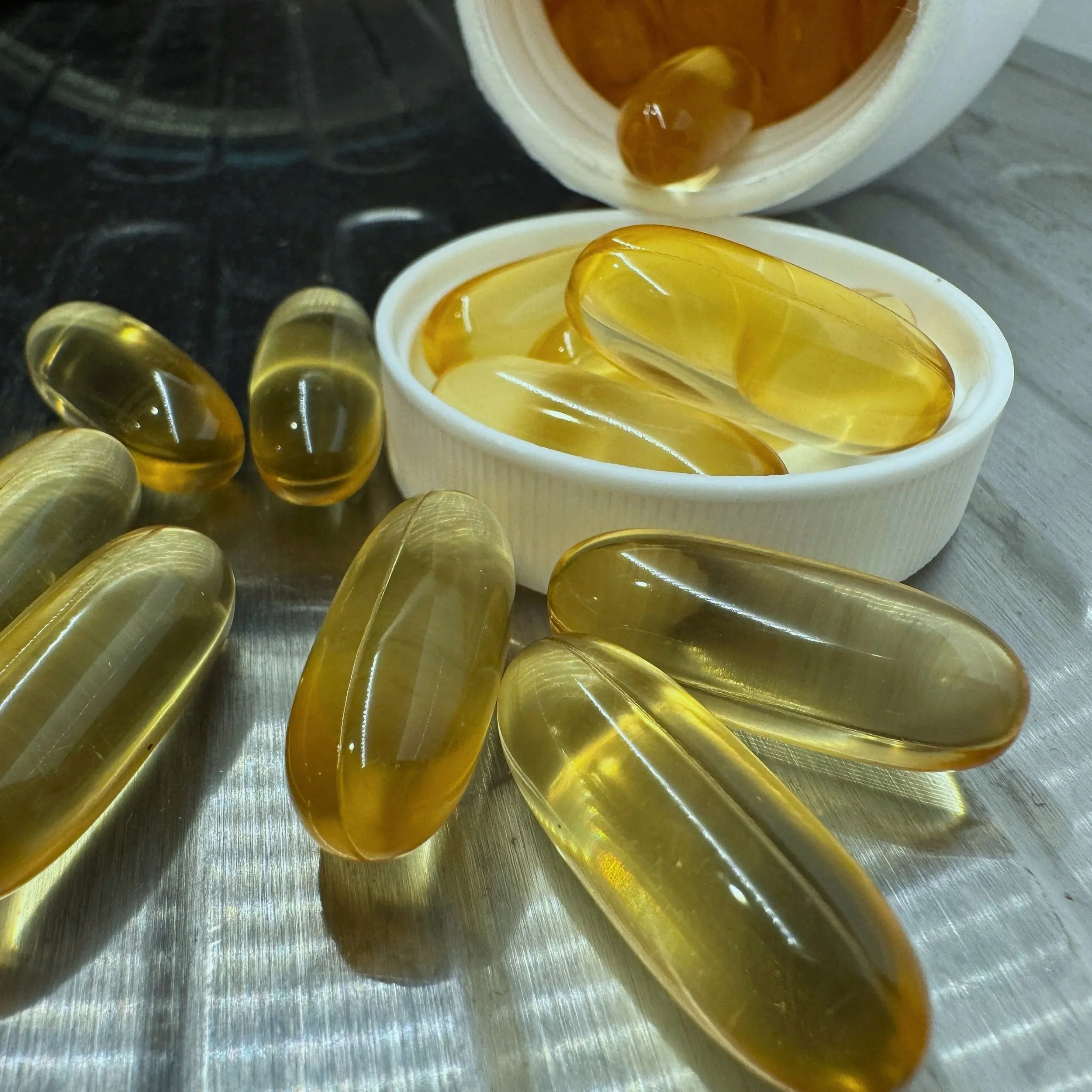The Importance of Omega-3s for Dry Eyes: What You Need to Know
Omega-3’s and their impact on Dry Eyes
Figure 1: Omega-3 tablets
If you’ve ever experienced burning, gritty, or watery eyes, you’re not alone—millions of people suffer from dry eye syndrome, a common condition caused by poor tear quality or insufficient tear production. While artificial tears and prescription eye drops can help, one of the most effective natural ways to improve dry eye symptoms is through omega-3 fatty acids.
What Are Omega-3 Fatty Acids?
Omega-3s are essential fatty acids—meaning your body can’t make them on its own. You must get them through diet or supplements. The three main types are:
ALA (alpha-linolenic acid): found in flaxseeds, chia seeds, and walnuts.
EPA (eicosapentaenoic acid) and DHA (docosahexaenoic acid): found mainly in cold-water fish like salmon, sardines, and mackerel.
EPA and DHA are the most beneficial for eye health, as they play a direct role in reducing inflammation and improving the quality of your tear film.
How Omega-3s Help With Dry Eyes
Dry eye is often linked to inflammation of the meibomian glands, which produce the oily layer of your tears. Without enough oil, tears evaporate too quickly, leading to dryness and discomfort. Omega-3 fatty acids help by:
🩸 Reducing Inflammation: Omega-3s lower inflammatory markers in the eye’s surface and glands, helping your body produce healthier tears.
💧 Improving Tear Quality: They enhance the lipid (oil) layer of your tear film, reducing evaporation and keeping eyes more comfortable throughout the day.
🌊 Supporting Meibomian Gland Function: Healthy glands mean better oil secretion and longer-lasting moisture.
What Does the Research Say?
Multiple clinical studies have shown a positive connection between omega-3 intake and dry eye relief.
A 2016 study in Cornea found that patients who took omega-3 supplements for 3 months had significant improvement in tear stability and comfort.
A 2021 review in Ophthalmology and Therapy concluded that omega-3s not only relieve symptoms but may also help prevent progression of chronic dry eye disease.
How to Get Enough Omega-3s
You can boost your omega-3 intake in two main ways:
1. Through Food:
Aim to eat at least two servings of fatty fish per week. Good sources include:
Salmon
Sardines
Tuna
Mackerel
If you’re vegetarian or vegan, flaxseed oil, chia seeds, and walnuts are alternatives—but keep in mind that plant-based ALA doesn’t convert efficiently to the more beneficial EPA and DHA forms.
2. Through Supplements:
Fish oil or algae-based omega-3 supplements are an excellent option for those who don’t eat enough seafood. Look for:
High EPA content (around 1,000 mg/day combined EPA+DHA is a good starting point)
Triglyceride or re-esterified form for better absorption
Third-party testing for purity and freshness
Always talk to your eye doctor or healthcare provider before starting any supplement, especially if you’re on blood thinners or have health conditions.
The Bottom Line
Omega-3 fatty acids are a simple but powerful way to support eye comfort and long-term ocular health. By reducing inflammation and improving tear quality, they can make a noticeable difference for anyone struggling with dry eyes—especially those who spend long hours on digital devices or in dry environments.
If you’re dealing with persistent dryness, schedule an eye exam to discuss whether omega-3 supplements could be part of your treatment plan.

